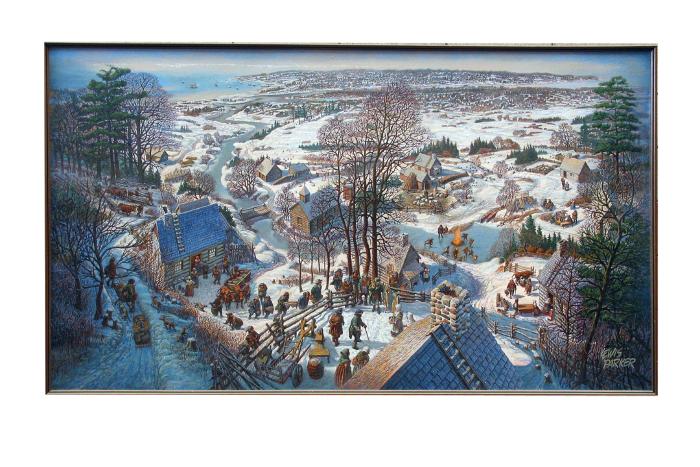Acadians at Cheticamp - 1810
X.114.01
This mural depicts an Acadian settlement at Chéticamp, which was founded in 1785 by 14 people referred to as Les Quatorze Vieux. The central scene shows the celebration of La Chandeleur, which is the religious feast day of Candlemas on February 2nd. Traditionally it began in church with the blessing of the candles and was followed by a supper and an evening of music and dance. A few days prior, a group of people from the community would go from house to house in search of food for Candlemas. An individual dressed up for the occasion, holding a long cane decorated with ribbons of various colours, would have led this group. Where food was given out, the group would dance the Escaouette as a way of thanking the householders. This activity was called courir la Chandeleur (running the Candlemas). Aspects of this tradition still remain today in the form of a supper and dance at a local community hall. In the painting the leader of the festival is based upon Fr. Charles Aucoin. In the 1970s, Father Aucoin played a leading role in obtaining funding for the construction of the Acadian cultural centre Les Trois Pignons, located in Chéticamp.
While the mural focuses on this celebration, other details provide information about the community’s livelihood in 1810. In the bottom left corner hunters are returning to the town. The importance of farming is indicated by the presence of cattle and sheep in the scene. The boats off Chéticamp Island, depicted at the top of the mural, are a reminder that fishing was historically a mainstay in the lives of the Acadians at Chéticamp. Within this painting Lewis Parker shows the marked influence that the peasant/landscape scenes of Pieter Brueghel (c. 1525-69) have played in shaping his own ideas about the past.
